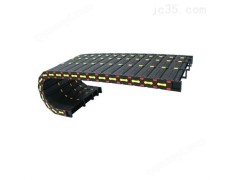- 密度:
- 0.93
Installation of coal bunker lining:
Years of installation experience have allowed our company to summarize the two most common installation methods. 1. Welding bolt fixing method (applicable to steel coal hoppers): smooth the surface of the coal bunker so that the lining plate and the coal hopper are in close contact so that no coal powder will enter, so that the lining plate can effectively protect the coal hopper from being corroded by moisture, and then weld the bolts to The lining plate is placed on top and fixed and fastened with special nest-shaped gaskets. 2. The expansion bolt fixing method (applicable to cement coal hopper) is the same as the steel coal hopper installation method, except that the fixing parts should be expansion bolts.
Generally, when installing the lining board, install the longest side of the lining board in the vertical direction. If the board is thin (less than a millimeter), the vertical edges can be overlapped. For thicker lining boards, the joint edges should be cut to size. In this way, changes in length are allowed and a smooth plastic plane is formed in the silo, which is conducive to the flow of materials. For the sides of the plates laid along the direction of material flow, docking can fully meet the requirements. Fixing lining technology on concrete structures When installing storage tanks and hoppers in concrete structures, especially for old storage tanks or hoppers, the strength of the concrete structure should be checked (the thickness and firmness of the cement layer are very necessary). The thickness and structure of the lining are directly related to the firmness of the installed lining. According to the verification results, select appropriate fastening materials. Generally, special expansion bolts are used for connection. The expansion bolts must be installed on a hard cement layer without cracks and holes (if the above conditions are not available, plastic hinge nails can also be used to ensure that the lining is firmly fixed). The distance between fixing bolts depends on the thickness of the liner and the operating conditions. Techniques for fixing lining plates on steel structures generally use the following methods: Steel plate drilling method Welding bolt method Since the expansion coefficient of the lining plate is /°C, in the case of large changes in operation or ambient temperature, the lining plate will The fixed form must allow for its free expansion or contraction. Any fixing method should be designed to facilitate the flow of bulk materials, and the screw head nuts should always be embedded in the liner. Special attention should be paid during installation: The number of bolts used per square meter should not be less than one bolt. The countersunk head plane must be lower than the plate. The gap between the plates should not be larger (appropriate adjustments should be made according to the ambient temperature of the plate during installation)
< br/>








 Year1
Year1




 WhatsApp
WhatsApp





